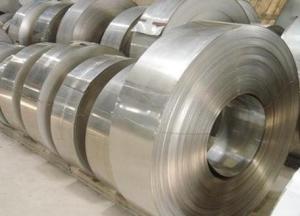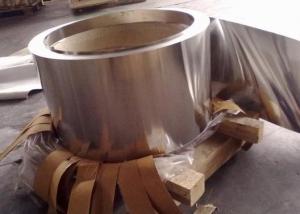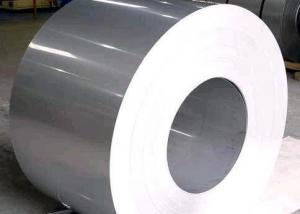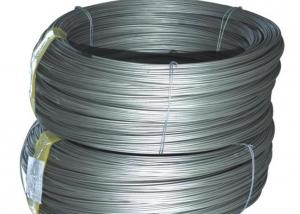SUS304L Stainless Steel Strips
- Loading Port:
- China Main Port
- Payment Terms:
- TT or LC
- Min Order Qty:
- 1 Ton m.t.
- Supply Capability:
- 2000 Tons Per Month m.t./month
OKorder Service Pledge
OKorder Financial Service
You Might Also Like
304L Stainless Steel Strips
1. Chemical composition
|
C |
Si |
Mn |
P |
S |
Ni |
Cr |
|
Max0.03 |
Max1.00 |
Max2.00 |
Max0.045 |
Max0.03 |
9.0-13.0 |
18.0-20.0 |
2. Mechanical properties
|
Yield Strength |
Tensile |
Elongation |
Hardness (HV) |
Hardness (HRB) |
|
≥175 |
≥480 |
≥40 |
≤200 |
≤90 |
3. Standard: AISI, ASTM, GB, EN, DIN, JIS
4. Surface: 2B, NO.1, BA, NO.4, Hairline, SB, Mirror finish, Anti-skid, Cherkered etc.
5. Size: Thickness: 0.3-3mm (cold rolled), 3-40mm (hot rolled)
Width: 1000mm or 1219mm or 1240mm for cold rolled, 1500mm for hot rolled.
Length: As customers' request.
6. MOQ: 1 Ton
7. Payment terms: T/T or L/C
8. Packing: Seaworthy package with wooden or Iron pallets with the paper and the steel strip, or as customers' request.
9. Delivery time: Usually about 7 days after we confirming the order, or according to your quantity.
If you have any question or demand, pls feel free to contact me.
| Standard Name | Chemical Composition | Mechanical Properties | ||||||||||||||
| JIS | GB | AIST | EN | C | Si | Mn | P | S | Ni | Cr | Others | Yield Strength | Tensile | Elongation | Hardness | |
| UNS | max | max | max | max | max | max | N/mm2 | N/mm2 | % | HV | HRB | |||||
| Austenitic stainless steels | ||||||||||||||||
| SUS201 | 1Cr17Mn6Ni5N | 201 | ** | 0.15 | 1 | 5.50-7.50 | 0.06 | 0.03 | 1 | 16.00-18.00 | N0.25 | 245 | 640 | 40 | 253 | 100 |
| SUS202 | 1Cr18Mn8Ni5N | 202 | ** | 0.15 | 1 | 7.50-10.00 | 0.06 | 0.03 | 4.00-6.00 | 17.00-19.00 | N0.25 | 245 | 590 | 40 | 218 | 95 |
| SUS301 | 1Cr17Ni7 | 301 | 1.431 | 0.15 | 1 | 2 | 0.045 | 0.03 | 6.00-8.00 | 16.00-18.00 | — | ≥205 | ≥520 | ≥40 | ≤218 | ≤95 |
| SUS301L | 00Cr17Ni7 | 301L | 1.4318 | 0.03 | 1 | 2 | 0.045 | 0.03 | 6.00-8.00 | 16.00-18.00 | N:0.20 | ≥215 | ≥550 | ≥45 | ≤218 | ≤95 |
| SUS304 | 0Cr18Ni9 | 304 | 1.4301 | 0.08 | 1 | 2 | 0.045 | 0.03 | 8.0-10.50 | 18.00-20.00 | — | ≥205 | ≥520 | ≥40 | ≤200 | ≤90 |
| SUS304L | 00Cr19Ni10 | 304L | 1.4307 | 0.03 | 1 | 2 | 0.045 | 0.03 | 9.00-13.00 | 18.00-20.00 | — | ≥175 | ≥480 | ≥40 | ≤200 | ≤90 |
| SUS304CU | 0Cr18Ni9 | 304 | 1.4301 | 0.08 | 1 | 2 | 0.045 | 0.03 | 8.00-10.50 | 18.00-20.00 | CU:0.70-1.30 | ≥205 | ≥520 | ≥40 | ≤200 | ≤90 |
| SUS304Ni8.5 | 0Cr18Ni9 | 304 | 1.4301 | 0.08 | 1 | 2 | 0.045 | 0.03 | 8.50-10.50 | 18.00-20.00 | — | ≥205 | ≥520 | ≥40 | ≤200 | ≤90 |
| SUS304Ni9 | 0Cr18Ni9 | 304 | 1.4301 | 0.08 | 1 | 2 | 0.045 | 0.03 | 9.00-10.50 | 18.00-20.00 | — | ≥205 | ≥520 | ≥40 | ≤200 | ≤90 |
| SUS316 | 0Cr17Ni12Mo2 | 316 | 1.4401 | 0.08 | 1 | 2 | 0.045 | 0.03 | 10.00-14.00 | 16.00-18.00 | Mo:2.00-3.00 | ≥205 | ≥520 | ≥40 | ≤200 | ≤90 |
| SUS316L | 00Cr17Ni14Mo2 | 316L | 1.4404 | 0.03 | 1 | 2 | 0.045 | 0.03 | 10.00-14.00 | 16.00-18.00 | Mo:2.00-3.00 | ≥175 | ≥480 | ≥40 | ≤200 | ≤90 |
| SUS316Ti | 1Cr18Ni12Mo2Ti | 316Ti | 1.4571 | 0.08 | 1 | 2 | 0.035 | 0.03 | 11.0-14.0 | 16.00-19.00 | Ti 5*C%-0.70,Mo 1.8-2.5 | ≥205 | ≥520 | ≥40 | ≤200 | ≤90 |
| SUS321 | 0Cr18Ni10Ti | 321 | 1.4541 | 0.08 | 1 | 2 | 0.045 | 0.03 | 9.00-13.00 | 17.00-19.00 | Ti:5*C% | ≥205 | ≥520 | ≥40 | ≤200 | ≤90 |
| SUS309S | 0Cr23Ni13 | 309S | 1.4833 | 0.08 | 1 | 2 | 0.045 | 0.03 | 12.00-15.00 | 22.00-24.00 | — | ≥205 | ≥520 | ≥40 | ≤200 | ≤90 |
| SUS310S | 0Cr25Ni20 | 310S | 1.4845 | 0.08 | 1.5 | 2 | 0.045 | 0.03 | 19.00-22.00 | 24.00-26.00 | — | ≥205 | ≥520 | ≥40 | ≤200 | ≤90 |
| Ferritic stainless steels | ||||||||||||||||
| SUH409L | 00Cr12Ti | 409L | 1.4512 | 0.03 | 1 | 1 | 0.04 | 0.03 | — | 10.50-11.75 | Ti:6*C%-0.75 | ≥175 | ≥360 | ≥25 | ≤175 | ≤80 |
| SUS436L | 00Cr17Mo | ** | ** | 0.025 | 1 | 1 | 0.04 | 0.03 | — | 16.00-19.00 | Mo:0.75-1.50、Ti,Nb,Zr:8*(C%+N%)-0.80 | ≥245 | ≥410 | ≥20 | ≤230 | ≤96 |
| SUS410 | ** | 410 | 1.4006 | 0.15 | 1 | 1 | 0.04 | 0.03 | — | 11.50-13.50 | — | ≥205 | ≥440 | ≥20 | ≤210 | ≤93 |
| SUS410L | 00Cr12 | ** | 1.4003 | 0.03 | 1 | 1 | 0.04 | 0.03 | — | 11.00-13.50 | — | ≥195 | ≥360 | ≥22 | ≤200 | ≤88 |
| SUS439 | 00Cr17 | ** | 1.451 | 0.03 | 1 | 1 | 0.04 | 0.03 | 0.5 | 17.00-19.00 | Ti:〔0.20+4*(C+N)〕-1.10,Al:0.15:N:0.030 | ≥205 | ≥415 | ≥22 | ≤200 | ≤89 |
| SUS434 | ** | 434 | 1.4113 | 0.12 | 1 | 1 | 0.04 | 0.03 | — | 16.00-18.00 | — | ≥205 | ≥450 | ≥22 | ≤200 | ≤88 |
| SUS444 | 00Cr18Mo2 | 444 | 1.4521 | 0.025 | 1 | 1 | 0.04 | 0.03 | — | 17.00-20.00 | Mo:1.75-2.50 Ti,Nb,Zr:8*(C%+N%)-0.80 | ≥245 | ≥410 | ≥20 | ≤230 | ≤96 |
| SUS430 | 1Cr17 | 430 | 1.4016 | 0.12 | 1 | 1 | 0.04 | 0.03 | — | 16.00-18.00 | — | ≥205 | ≥420 | ≥22 | ≤200 | ≤88 |
| Martensitic stainless steels | ||||||||||||||||
| SUS420J1 | 2Cr13 | 420 | 1.4021 | 0.16-0.25 | 1 | 1 | 0.04 | 0.03 | — | 12.00-14.00 | — | ≥225 | ≥520 | ≥18 | ≥234 | ≥97 |
| SUS420J2 | 3Cr13 | 420JS | 1.4028 | 0.26-0.40 | 1 | 1 | 0.04 | 0.03 | — | 12.00-14.00 | — | ≥225 | ≥540 | ≥18 | ≥247 | ≥99 |
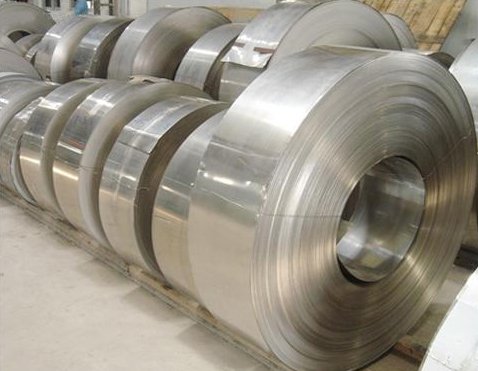
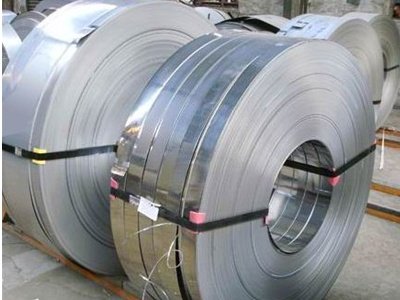
- Q:Can stainless steel wire be used for safety barriers?
- Yes, stainless steel wire can be used for safety barriers. Stainless steel is a highly durable and corrosion-resistant material, making it ideal for applications where safety and longevity are important. It provides a strong and secure barrier, capable of withstanding harsh environmental conditions and frequent use. Moreover, stainless steel wire is resistant to rust and corrosion, ensuring its effectiveness and appearance over time. Whether for industrial, commercial, or residential purposes, stainless steel wire is a reliable choice for safety barriers due to its strength, durability, and resistance to wear and tear.
- Q:What is the difference between the spring stainless steel wire, the fog and the bright surface?
- Bright stainless steel wire is usually drawn by cold drawing. The stainless steel wire is made by cold drawing and then treated by chemical passivation, so the price is higher.
- Q:What are the advantages of using stainless steel wire?
- There are several advantages of using stainless steel wire. Firstly, stainless steel is highly resistant to corrosion and rust, making it suitable for various applications in industries like construction, automotive, and marine. Secondly, stainless steel wire has high strength and durability, making it capable of withstanding heavy loads and extreme temperatures. Additionally, stainless steel wire is non-magnetic, which is beneficial in applications where magnetic interference needs to be avoided. Lastly, stainless steel wire is easy to clean and maintain, making it a cost-effective choice in the long run.
- Q:Can stainless steel wire be used for jewelry making?
- Yes, stainless steel wire can be used for jewelry making. It is a durable and corrosion-resistant material that is ideal for creating various jewelry pieces such as necklaces, bracelets, and earrings.
- Q:201 stainless steel hydrogen withdrawal what are the uses?
- Stainless steel wire hydrogen back, using a large hydrogen back device, reduce hardness and improve the plasticity, eliminate stress and eliminate uneven microstructure refinement and grain structure, more uniform surface quality is more delicate, bright surface, soft, non magnetic, anti fatigue, extensionetc.
- Q:Can stainless steel wire be used for wire EDM machining?
- Yes, stainless steel wire can be used for wire EDM (Electrical Discharge Machining) machining. Wire EDM is a precision machining process that uses a thin, electrically conductive wire to cut through a workpiece. Stainless steel wire is often preferred for wire EDM machining due to its high strength, corrosion resistance, and excellent conductivity. It can effectively cut through various materials, including metals, alloys, and even hardened steels. Additionally, stainless steel wire offers good stability, durability, and dimensional accuracy, making it a suitable choice for intricate and precise machining operations.
- Q:The difference between brushed steel and mirror stainless steel plate
- Mirror stainless steel plate, refers to the surface of the plate in the mirror processing, after the completion of processing, the surface shining, like a mirror, you can take pictures, this is in the shopping malls, high-end elevators are more common.
- Q:What are the different types of stainless steel wire connectors for plumbing?
- There are several different types of stainless steel wire connectors for plumbing, each designed to serve different purposes and meet specific needs. Here are some common types: 1. Compression fittings: These connectors consist of a compression nut, a ferrule, and a compression ring. They are used to connect two pipes together by creating a tight seal through compression. 2. Push-to-connect fittings: These connectors are designed for quick and easy installation. They feature a push-fit mechanism that allows the pipes or tubing to be easily inserted and securely connected without the need for additional tools. 3. Threaded fittings: These connectors have threads on the inner surface, allowing them to be screwed onto pipes or fittings with matching threads. They provide a secure and leak-proof connection when properly tightened. 4. Flared fittings: These connectors have a flared end that is inserted into a flared fitting, creating a tight seal. They are commonly used in applications that require high pressure or where the pipes need to be easily disconnected and reconnected. 5. Barb fittings: Also known as hose barb fittings, these connectors have a barbed end that is inserted into a hose or tubing. They are secured with a clamp or a crimping tool, providing a reliable connection. 6. Quick-connect fittings: These connectors are designed for quick and easy disconnection and reconnection. They feature a push-button or a twist-lock mechanism that allows for fast and convenient attachment and detachment of pipes or hoses. 7. Camlock fittings: These connectors are widely used in industrial settings. They consist of a male and female coupling with grooves that interlock, creating a secure connection. They are commonly used for transferring fluids or gases. It is important to choose the right type of stainless steel wire connector based on the specific plumbing application, taking into consideration factors such as pressure, temperature, and compatibility with the plumbing system.
- Q:Talking about the difference between mirror stainless steel and brushed stainless steel
- Mirror stainless steel characters are polished on the surface of ordinary stainless steel, polishing the surface as the mirror, you can clearly reflect the material, reflecting the people, divided into 8K, 10K, 12K surface effects,. Mirror stainless steel words are made of mirror stainless steel!
- Q:What is stainless steel wire made of?
- Stainless steel wire, predominantly composed of iron, incorporates chromium, nickel, and other alloying elements. The precise composition of stainless steel wire may vary depending on the specific grade and intended use. The incorporation of chromium imparts corrosion-resistant characteristics to stainless steel wire by creating a thin protective layer that hinders rust formation. Nickel is frequently added to augment the wire's strength and ductility. Additionally, other alloying elements such as molybdenum, titanium, and copper may be included to further enhance specific properties, like resistance to high temperatures or improved weldability. In general, stainless steel wire is a versatile and durable material extensively utilized across numerous industries due to its exceptional mechanical and corrosion resistance properties.
1. Manufacturer Overview |
|
|---|---|
| Location | Hebei,China |
| Year Established | 1989 |
| Annual Output Value | Above US$160 Thousand |
| Main Markets | Europe, East Asia and Southeast Asia |
| Company Certifications | ISO9001:2000; |
2. Manufacturer Certificates |
|
|---|---|
| a) Certification Name | |
| Range | |
| Reference | |
| Validity Period | |
3. Manufacturer Capability |
|
|---|---|
| a)Trade Capacity | |
| Nearest Port | Tianjin |
| Export Percentage | 70% |
| No.of Employees in Trade Department | 30 People |
| Language Spoken: | English;Chinese |
| b)Factory Information | |
| Factory Size: | Above 14,500 square meters |
| No. of Production Lines | Above 6 |
| Contract Manufacturing | OEM Service Offered;Design Service Offered |
| Product Price Range | Average |
Send your message to us
SUS304L Stainless Steel Strips
- Loading Port:
- China Main Port
- Payment Terms:
- TT or LC
- Min Order Qty:
- 1 Ton m.t.
- Supply Capability:
- 2000 Tons Per Month m.t./month
OKorder Service Pledge
OKorder Financial Service
Similar products
New products
Hot products
Related keywords
